Interested in Becoming a Weather Ready Nation Ambassador? Here’s How!
Green Bay, WI
https://www.weather.gov/www.weather.gov/wrn/ambassadors
Green Bay, WI
https://www.weather.gov/www.weather.gov/wrn/ambassadors
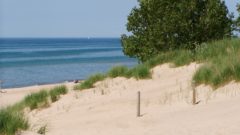
By Enrique Saenz, Indiana Environmental Reporter
In a document sent to the state, U.S. Steel Corp. said a chain of events kicked off by a missed acid delivery to its Midwest Plant in Portage led to a large discharge of iron into a nearby waterway in late September.
Great Lakes Now
https://www.greatlakesnow.org/2021/10/missed-acid-delivery-midwest-plant-iron-discharge/
This memory was written by Jane Bouressa Smits, a long-time supporter of the locks and we thank her for sharing it!
It is 1960. The bell rings! A boat is coming! Soon lock tender Jack Willey drives down the gravel path behind my house to the Little Chute lock. He is a mentor to my friend Jerry and me, allowing us to open the lock gates by pushing the metal handle around and around and around, engaging the gears that open the locks. We feel powerful moving those heavy gates! He instills pride by letting us help him. He teaches us about nature by pointing out rabbit hutches and identifying birds and flora around his little work station on the locks.
His workroom in the government-provided “lock tender” home has an enormous slanted wooden table (like a drafting table) mounted on the wall. There he sits on a stool and records: the vessel name or number, i.e., Sherry Lyn, MaHenapa, Rusty Pelican, W.S.4990AX; type of boat, i.e., tug, houseboat, sailboat, launch; time signaled; arrival/departure times; direction (up or down river); and number of lockages on the Fox. His wife may be busy preparing lesson plans for English classes at St. John High School. It is all very “official.”
Often, my friend and I either cross the locks or the Little Chute lift bridge to traverse the narrow peninsula that leads from the Little Chute lock to the Combined Locks dam, encountering brush, roots, trees, fallen branches and occasionally poison ivy and poison oak! We light a campfire below the Combined Locks dam (when it isn’t flooded by water) and eat a lunch consisting of Campbell’s alphabet soup and a couple cookies. It is a “wonderland,” and we are free to explore it.
Fast forward to 2012. It warms my heart that the same peninsula is broadened, paved, made safer and open to the public to enjoy and explore. People bike or stroll down Little Chute Heritage Parkway Trail that connects Island Park with Heesakker Park.
Fast forward to 2016. Mr. Willey’s home is now open for rental, so people are able to stay and experience the Fox Locks area up close like Jerry and I did when we were youngsters.
Fast forward to 2021. The Heritage Parkway Trail is extended mostly through the generosity of the David and Rita Nelson Family to become the David and Rita Nelson Family Heritage Crossing. An approximately 1100’ pedestrian bridge was built crossing over the Fox connecting Little Chute to Kaukauna. Also included is a 3/4 mile asphalt trail extending from the Kaukauna side of the bridge into downtown Kaukauna. More extensions of the trail system are planned.
Thankfully, individual citizens, communities, and organizations such as Friends of the Fox, Fox-Wisconsin Heritage Parkway, Fox River Navigation Authority and Fox Cities Greenways have the foresight and drive to develop and preserve our heritage. They provide opportunities for future generations and make me . . . feel like I’m 10 again!
Jayne Bouressa Smits
Blog – Fox Locks
http://foxlocks.org/2021/10/08/lock-tenders-little-helpers/
NCEI News Feed
http://www.ncei.noaa.gov/news/national-climate-202109
Michigan Governor Gretchen Whitmer and local lawmakers are at odds over Canada’s support for the crude oil pipeline across the bottom of the Straits of Mackinac. Read the full story by The Monroe News.
Great Lakes Commission
https://www.glc.org/dailynews/20211008-pipeline
The office of U.S. Congressman Tom Reed announced Yates County, New York will receive a $195,227 Great Lakes Restoration Initiative grant provided through the Great Lakes Commission. Read the full story by the Observer Review.
Great Lakes Commission
https://www.glc.org/dailynews/20211008-grant-funding
Michigan residents are advised to look out for the invasive species on the state’s watchlist. Read the full story by the Lansing State Journal.
Great Lakes Commission
https://www.glc.org/dailynews/20211008-invasive-species
Ontario is rolling out new rules related to the use and movement of baitfish and leeches when fishing in the province. This is all part of the province’s plan to prevent the spread of invasive species and diseases that can devastate Ontario’s fish stocks. Read the full story by Sault Online.
Great Lakes Commission
https://www.glc.org/dailynews/20211008-baitfish
One thousand fingerling lake sturgeon were released into the Genesee River, a tributary of Lake Ontario in New York, as part of a statewide recovery effort for the species. Read the full story by WHAM-TV – Rochester, NY.
Great Lakes Commission
https://www.glc.org/dailynews/20211008-sturgeon
The state of Michigan says a Flint chemical company with a permit to discharge into the Flint River appears to be responsible for contaminated stormwater or groundwater that has found its way into the city’s storm sewer system. Read the full story by MLive.
Great Lakes Commission
https://www.glc.org/dailynews/20211008-groundwater
Tons of soil is being removed from a westside Detroit park as part of a storm water retention project to reduce flooding in streets and basements during periods of heavy rainfall. Read the full story by The Associated Press.
Great Lakes Commission
https://www.glc.org/dailynews/20211008-storm-water-project
An oil spill from the U.S. Steel plant in Northwest Indiana forced the closure of nearby Lake Michigan beaches for the second time in less than two weeks. Read the full story by the Chicago Sun-Times.
Great Lakes Commission
https://www.glc.org/dailynews/20211008-oil-spill
The Ohio Department of Natural Resources says nine reservoirs, including Lake Milton and Pymatuning Lake, have been stocked with muskellunge, a popular game fish that can grow to immense sizes. Read the full story by WFMJ-TV – Jamestown, PA.
Great Lakes Commission
https://www.glc.org/dailynews/20211008-game-fish
Community leaders along Lake Michigan in Wisconsin are celebrating the creation of the Wisconsin Shipwreck Coast National Marine Sanctuary this weekend. Read the full story by Manitowoc Herald Times Reporter.
Great Lakes Commission
https://www.glc.org/dailynews/20211008-wisconsin-shickwreck
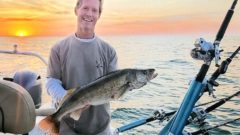
Lake Erie, so far as modern fisheries biologists are concerned, has never been so flush with walleye.
The Ohio Department of Natural Resources estimates there are currently about 95 million walleye in the lake two years old or older – that translates into fish about 15 inches or longer, the minimum size for keeping and eating.
Great Lakes Now
https://www.greatlakesnow.org/2021/10/walleye-windfall-2021-hatch-fish-lake-erie/
Jim DuFresne reflects on hiking in an Upper Peninsula area with connections to Ernest Hemingway.
The post Rediscovering the Fox River & its famous author first appeared on Great Lakes Echo.Great Lakes Echo
http://greatlakesecho.org/2021/10/08/rediscovering-the-fox-river-its-famous-author/
Scientists detected six types of coronaviruses in numerous mammals sampled on and near mink farms in Utah, according to a U.S. Geological Survey-led study available today.
Region 3: Great Lakes
http://www.usgs.gov/news/state-news-release/multiple-coronaviruses-found-animals-around-utah-mink-farms
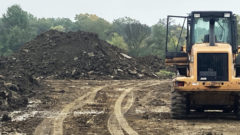
By Corey Williams, Associated Press
DETROIT (AP) — Tons of soil is being removed from a westside Detroit park as part of a storm water retention project to reduce flooding in streets and basements during periods of heavy rainfall.
The project at Rouge Park is expected to capture nearly 100 million gallons of storm water each year, alleviating pressure on the city’s combined sewer system, Detroit Water and Sewerage Deputy Director and Chief Engineer Palencia Mobley said Wednesday.
Great Lakes Now
https://www.greatlakesnow.org/2021/10/ap-detroit-rouge-park-storm-water-project/
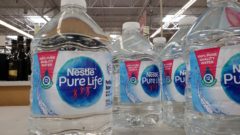
By Ed White, Associated Press
DETROIT (AP) — Michigan on Wednesday urged residents of Benton Harbor to use only bottled water for cooking and drinking, a major shift in response to the city’s elevated levels of lead.
The state recently said it would distribute free water and filters in the southwestern Michigan city.
Great Lakes Now
https://www.greatlakesnow.org/2021/10/ap-benton-harbor-bottled-water-lead-risk/
The Water Policy Manager (Manager) works with the Vice President of Policy and Strategic Engagement (VP of Policy), program staff and communications staff to support the Alliance’s policy and advocacy campaigns across the Great Lakes region. The Manager understands how our policy priorities help improve the Great Lakes and the lives of people who depend on them. They bring strength in both independent policy analysis and written communication skills, and work regularly with program staff to analyze policy and legislation, and develop external communications to support ongoing policy campaigns across all levels of government. The Manager will work closely with the Alliance’s Communication and Engagement Team (C&E) to ensure that C&E staff is abreast of policy and advocacy developments, needs and opportunities. The Manager works collaboratively with program and communications staff to ensure timely and high-quality creation of written and oral communications including presentations, fact sheets, briefing, blogs and comment letters directed to diverse audiences of stakeholders and government officials. This is primarily an internal role at the Alliance that ensures that we have clear, compelling and consistent stories to tell across our highest priority policy campaigns.
A typical week for the Water Policy Manager might look like this –
Impact: Within the first three years of this position’s work, candidates should expect to:
Please e-mail a cover letter, resume, references and writing sample to: hr@greatlakes.org.
Include job title in the subject line.
Applications will be accepted until the position is filled – we are looking to fill immediately. Materials should be compatible with Microsoft Word or Adobe Acrobat. Applicants will receive confirmation of receipt of their materials and further guidance and updates about the hiring process by e-mail, with interviews provided for finalists. No phone inquiries please.
The Alliance for the Great Lakes is an Equal Opportunity Employer. The search process will reinforce the Alliance’s belief that achieving diversity requires an enduring commitment to inclusion that must find full expression in our organizational culture, values, norms, and behaviors.
Our mission is to protect, conserve and restore the Great Lakes ensuring healthy water in the lakes and in our communities for all generations of people and wildlife. We advance our mission as advocates for policies that support the lakes and communities, by building the research, analysis and partnerships that motivate action, and by educating and uniting people as a voice for the Great Lakes. Learn more about the Alliance at www.greatlakes.org.
The post Water Policy Manager appeared first on Alliance for the Great Lakes.
News – Alliance for the Great Lakes
News – Alliance for the Great Lakes
https://greatlakes.org/2021/10/water-policy-manager/
The Individual Giving Manager (Manager) supports the overall fundraising strategy for the Alliance for the Great Lakes by developing and implementing a growth strategy and managing relationships with existing and new donors. This position is responsible for the coordination, solicitation, and stewardship of current and prospective donors implementing strategies that foster long-term engagement and broaden support across philanthropic giving opportunities. They work primarily with individual donors, as well as some institutional donors, family foundations, and businesses.
A typical day might include stewarding individual donors by thanking them for their support through printed acknowledgment letters and/or personal calls/conversations, cultivating individual donors through conversations around opportunities for increased support and engagement, managing production of print appeals, working with our communications team on electronic appeals and social media postings for campaigns/events, designing and creating an online donation page, planning our Great Blue Benefit and other gatherings for current and prospective donors, talking with individuals or small businesses interested in learning more about the organization and/or raising money on our behalf, and entering information and running reports in Salesforce. An upbeat, collaborative work style and sense of humor are keys to success in this role!
The Manager reports to the Vice President of Development and works closely with members of the Development Team, the Communications & Engagement Team, and the Leadership Team.
Please e-mail a cover letter, resume, references and writing sample to: hr@greatlakes.org.
Include job title in the subject line.
Applications will be accepted until the position is filled – we are looking to fill immediately. Materials should be compatible with Microsoft Word or Adobe Acrobat. Applicants will receive confirmation of receipt of their materials and further guidance and updates about the hiring process by e-mail, with interviews provided for finalists. No phone inquiries please.
The Alliance for the Great Lakes is an Equal Opportunity Employer. The search process will reinforce the Alliance’s belief that achieving diversity requires an enduring commitment to inclusion that must find full expression in our organizational culture, values, norms, and behaviors.
Our mission is to protect, conserve and restore the Great Lakes ensuring healthy water in the lakes and in our communities for all generations of people and wildlife. We advance our mission as advocates for policies that support the lakes and communities, by building the research, analysis and partnerships that motivate action, and by educating and uniting people as a voice for the Great Lakes. Learn more about the Alliance at www.greatlakes.org.
The Alliance envisions a thriving Great Lakes and healthy water that all life can rely on, today and far into the future. We aspire to be a voice for the lakes, and to support the voices of the communities that depend on the lakes and their waters.
The post Individual Giving Manager appeared first on Alliance for the Great Lakes.
News – Alliance for the Great Lakes
News – Alliance for the Great Lakes
https://greatlakes.org/2021/10/individual-giving-manager/
The Agriculture and Restoration Director (Director) develops and executes campaigns to reduce agricultural water pollution, restore and protect the Great Lakes ecosystem, and stop invasive species. The Director leads work in Wisconsin, Michigan and Ohio to achieve the Alliance’s agriculture and water goals and implements regional restoration initiatives. The Director serves as a convener, organizer and relationship builder at all levels of government and stakeholders with an emphasis on state-level policy. The Director works collaboratively with staff campaign teams to ensure timely and high-quality delivery of written analysis and recommendations. They identify and strengthen relationships with allies across the Great Lakes region to advance external program and policy priorities. The Director is a public figure for the organization who speaks with authority and diplomacy, is regarded as a regional thought leader on agricultural water issues, and elevates groups and cultivates relationships that further the Alliance’s clean water goals. The Director manages relationships with local and state decision makers, agency staff, businesses, partners, and other high-level individuals across the Great Lakes region. The Director provides counsel to the Alliance vice presidents, COO and president & CEO on state policy work across the region, community engagement, diversity, equity and inclusion, and staff mentorship and growth as they relate to the roles of the position.
A sample week for the Agriculture and Restoration Director might include:
The initial anticipated external impacts of this position over the next three years are creation and implementation of accountable strategies for reducing agricultural pollution in Lake Erie and Green Bay; initiating construction of new protections against invasive carp entering Lake Michigan; strong regional buy-in for large-scale coastal restoration action and funding. The priority anticipated internal impact is growing the credibility and influence of the Alliance’s agriculture and water policy initiatives with decision makers, the industry and the diversity of stakeholders and partners impacted by agricultural water pollution.
Strategist
Advocacy
Institutional
Please e-mail a cover letter, resume, references and writing sample to: hr@greatlakes.org.
Include job title in the subject line.
Applications will be accepted until the position is filled – we are looking to fill immediately. Materials should be compatible with Microsoft Word or Adobe Acrobat. Applicants will receive confirmation of receipt of their materials and further guidance and updates about the hiring process by e-mail, with interviews provided for finalists. No phone inquiries please.
The Alliance for the Great Lakes is an Equal Opportunity Employer. The search process will reinforce the Alliance’s belief that achieving diversity requires an enduring commitment to inclusion that must find full expression in our organizational culture, values, norms, and behaviors.
Our mission is to protect, conserve and restore the Great Lakes ensuring healthy water in the lakes and in our communities for all generations of people and wildlife. We advance our mission as advocates for policies that support the lakes and communities, by building the research, analysis and partnerships that motivate action, and by educating and uniting people as a voice for the Great Lakes. Learn more about the Alliance at www.greatlakes.org.
The Alliance envisions a thriving Great Lakes and healthy water that all life can rely on, today and far into the future. We aspire to be a voice for the lakes, and to support the voices of the communities that depend on the lakes and their waters.
The post Agriculture and Restoration Director appeared first on Alliance for the Great Lakes.
News – Alliance for the Great Lakes
News – Alliance for the Great Lakes
https://greatlakes.org/2021/10/agriculture-and-restoration-director/
The Great Lakes Water Authority believes it will take anywhere from “$5 billion to $20 billion” to shore up the regional infrastructure enough to prevent heavy storms from flooding basements in Metro Detroit, officials said. Read the full story by The Detroit News.
Great Lakes Commission
https://www.glc.org/dailynews/20211006-infrastructure
Based at the University of Minnesota’s Institute on the Environment, the Midwest Climate Adaptation Science Center Consortium will research the threats climate change has on natural resources and people in the Midwest. Read and hear the full story by WXPR – Rhinelander, WI.
Great Lakes Commission
https://www.glc.org/dailynews/20211006-climate-change
Canada invoked a treaty with the United States and asked a judge Monday to suspend litigation over Michigan’s effort to shut down a Great Lakes oil pipeline. Read the full story by the Associated Press.
Great Lakes Commission
https://www.glc.org/dailynews/20211006-treaty
Michigan’s Tribal Nations are responding after the Canadian government attempted to use a 1977 pipeline treaty to keep Line 5 open. Read the full story by WWTV-TV – Cadillac, MI.
Great Lakes Commission
https://www.glc.org/dailynews/20211006-tribal
As a result of the drier than average conditions, water levels on Lake Superior have gone below the seasonal long-term average for the first time since April 2014. Read the full story by Lake Superior News.
Great Lakes Commission
https://www.glc.org/dailynews/20211006-superior
State and federal officials on Tuesday confirmed the second finding of invasive carp DNA in the Milwaukee River. Read the full story by the Milwaukee Journal Sentinel.
Great Lakes Commission
https://www.glc.org/dailynews/20211006-carp
The cleanup of the Ashtabula River Area of Concern and removal from the international Great Lakes pollution hotspot list in 2021 are considered major successes that give hope to other communities working to clean up their polluted waterways. Read the full story by GreatLakesNow.
Great Lakes Commission
https://www.glc.org/dailynews/20211006-aoc
A storm-spurred equipment failure Monday at Hamilton’s treatment plant forced the city to dump 353 million litres of untreated and partly treated sewage into Red Hill Creek which flows into Hamilton Harbor. Read the full story by the Hamilton Spectator.
Great Lakes Commission
https://www.glc.org/dailynews/20211006-spill
The California oil spill that has contaminated miles of coastline is renewing concerns about the potential of an oil leak from Line 5, which runs under the Straits of Mackinac. Read the full story by WOOD -TV- Grand Rapids, MI.
Great Lakes Commission
https://www.glc.org/dailynews/20211006-oil-spill
According to a study published today in the journal Frontiers in Ecology and the Environment, there isn’t a widespread upswing of harmful algae blooms in North American lakes. Read the full story by Phys.org.
Great Lakes Commission
https://www.glc.org/dailynews/20211006-algal-blooms
The donation was part of a larger agreement earlier this year between the Oneida Nation and the city that recognizes tribal sovereignty and cooperation between tribal and city police. Read the full story by the Green Bay Press Gazette.
Great Lakes Commission
https://www.glc.org/dailynews/20211006-sanctuary
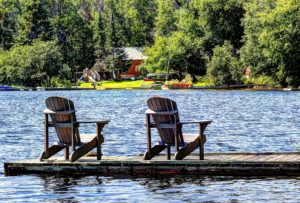 Oct. 6, 2021
Oct. 6, 2021
By Moira Harrington
For many Wisconsin families, a lake home or cabin is a little piece of heaven. A corporeal necessity of that heaven is often a septic system.
A team of researchers at the University of Wisconsin-Stevens Point Center for Watershed Science and Education, and with funding from the Water Resources Institute, is exploring whether there is a connection between a septic system and a lake’s water quality.
“Water quality in a lake is controlled by a lot of things, but one of the most important is the levels of, or the concentrations of, nutrients, particularly nitrogen and phosphorus,” said Paul McGinley, director and research scientist with the center. He holds another appointment with the University of Wisconsin-Madison Extension. “Anything that contributes to an increase in the amount of nitrogen or the amount of phosphorus that goes into the lake is going to certainly influence the biological productivity in that lake and ultimately that leads to water quality challenges,” such as algae growth.
The “anything” he referenced could be phosphorus and nitrogen in water from septic systems moving through systems’ drainfield soils into groundwater. That groundwater ultimately feeds streams and lakes. Previous studies have shown that wastewater treated in a tank to digest solids then passed to a drainfield for further chemical and biological reactions in the soil can still have nitrogen and phosphorus concentrations that are more than 50 times their concentrations in Wisconsin lakes.
McGinley said, “There really are a lot of unknowns with respect to how much phosphorous in particular gets into the lake from septic systems. We thought we could pair our interest in groundwater and lakes with this question and the need really to know what’s going on with this interaction between septic systems and some analytical methods that we’ve been developing in our laboratory.”
Current progress in developing those methods rests in the hands of Amy Nitka, organic laboratory supervisor with the center. She said, “The presence of artificial sweeteners allows us to distinguish contamination from human wastewater from other sources.”
Although it is challenging to identify these molecules, Nitka and her students have been working to refine analytical methods for acesulfame and sucralose, two common artificial sweeteners. With these identifying markers, they are able to determine which lake water samples have likely been impacted by wastewater from septic systems.
As Nitka presides over the lab, its students and equipment array await the fruits of field collection. Using a small tube inserted into the lakebed as well as nearshore, McGinley’s team is collecting water samples from several central Wisconsin lakes. These lakes are characterized by relatively calcareous glacial drift soils, areas where groundwater is moving into the lake and sandy lakebeds.
Just as the artificial sweetener signature is vital to this project, it’s also been vital to the students’ experience. They have presented research results at local and national conferences and some have gone on to graduate studies.
“It’s been a great project for our students,” McGinley said. “We have students that get involved in the analytical work and in the field work. Because this is kind of tricky analytical work, it’s really been a great launching place for these undergraduates.” It’s a two-way street, he was quick to add, saying the students’ contributions have also been vital to the lab’s progress.
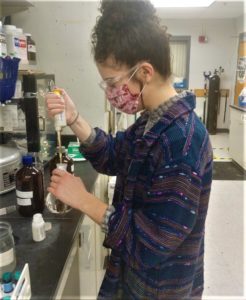
That progress will also result in a model to predict how septic systems influence phosphorus load to a lake over time, McGinley said. “One of our outcomes is to have a better understanding of how those septic systems might be influencing the lake. Then you can decide is that (septic systems) really something that’s worthwhile focusing on or should we be working on some other problems. We need to at least quantify that before we can put into the assessment of what we should be developing for strategies.”
A final angle to this project is its real-world applicability. McGinley said he and others on the research team will deliver presentations at conferences and will assist consultants in creating lake nutrient budgets.
He said he is also especially interested in sharing this knowledge with lake associations and lakeshore property owners. “The connection between a septic system and the lake is through groundwater. Groundwater is the water from rain and melting snow that moves downward through soil and eventually moves into lakes and streams,” he noted.
Cabin dwellers are familiar with how some areas of the lakebed are cooler than others during the summer. These “springs” are areas of high groundwater inflow. Temperature measurements can be used to map the areas of highest inflow areas. As part of the lab’s outreach and teaching, volunteer central Wisconsin cabin owners have been collecting temperature measurements with relatively simple probes fabricated as part of the project.
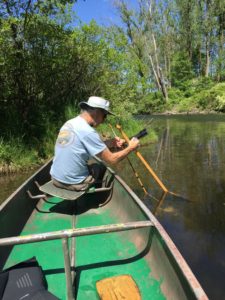
McGinley said the effort, “Helps us all understand how much the lake and the land are connected,” and how the boundaries of these small heavens actually extend well beyond the shore.
The post A sweet way to protect heaven first appeared on WRI.News Release | WRI
https://www.wri.wisc.edu/news/a-sweet-way-to-protect-heaven/
Current Watches, Warnings and Advisories for Brown (WIC009) Wisconsin Issued by the National Weather Service
https://alerts.weather.gov/cap/wwacapget.php?x=WI1261BDD74B9C.SpecialWeatherStatement.1261BDD79B4CWI.GRBSPSGRB.4d4e163bb4045ebb93126408887cdedd
Current Watches, Warnings and Advisories for Brown (WIC009) Wisconsin Issued by the National Weather Service
https://alerts.weather.gov/cap/wwacapget.php?x=WI1261BDD7086C.SpecialWeatherStatement.1261BDD79570WI.GRBSPSGRB.27abfef4bbb8fa6594b2d1a0d35fa3eb
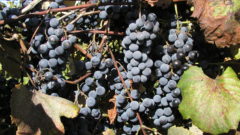
The gold medal winner of this year’s annual San Francisco Chronicle Wine Competition was a light unoaked chardonnay from Debonné Vineyards – a vineyard located in the Lake Erie region of northeast Ohio.
Despite the American wine and grape industry’s association with California’s Napa Valley, the Great Lakes region boasts four of the top 10 wine producing states in the nation.
Great Lakes Now
https://www.greatlakesnow.org/2021/10/grapes-soil-climate-great-lakes-wine-producing/
Current Watches, Warnings and Advisories for Brown (WIC009) Wisconsin Issued by the National Weather Service
https://alerts.weather.gov/cap/wwacapget.php?x=WI1261BDD698B4.SpecialWeatherStatement.1261BDD79570WI.GRBSPSGRB.27abfef4bbb8fa6594b2d1a0d35fa3eb
Fewer Michigan residents with sloppy backyard birds could be ticketed for potentially spreading disease among deer and elk under a bill the state Senate recently sent to the governor’s desk.
The post Backyard birders get a win in the Michigan legislature first appeared on Great Lakes Echo.Great Lakes Echo
http://greatlakesecho.org/2021/10/06/backyard-birders-get-a-win-in-the-michigan-legislature/
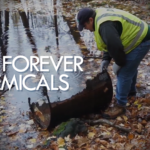
Finding out their toddler had the highest-known level of PFAS in his blood of anyone in the United States was devastating to Seth and Tobyn McNaughton. The discovery that her well water was contaminated with those same industrial chemicals forced Sandy Wynn-Stelt to use water processed through a complicated pump in her basement that she’s nicknamed “Megatron.”
Both scenes were first part of Great Lakes Now’s Emmy-winning documentary “The Forever Chemicals” and are now featured in John Oliver’s “Last Week Tonight” program on HBO.
Great Lakes Now
https://www.greatlakesnow.org/2021/10/pfas-great-lakes-now-last-week-tonight/
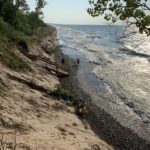
By Enrique Saenz, Indiana Environmental Reporter
Hundreds of Indiana municipalities applied for millions of dollars of state and federal money to fund much-needed water infrastructure projects, but only a few made the first cut.
The Indiana Finance Authority selected 22 municipalities out of more than 500 that applied to receive $63 million in grants from the first round of State Water Infrastructure Fund program funding.
Great Lakes Now
https://www.greatlakesnow.org/2021/10/communities-awarded-state-water-infrastructure-fund-grants/
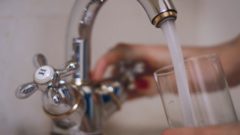
From lead pipes to PFAS, drinking water contamination is a major issue plaguing cities and
towns all around the Great Lakes. Cleaning up contaminants and providing safe water to
everyone is an ongoing public health struggle.
Keep up with drinking water-related developments in the Great Lakes area.
Great Lakes Now
https://www.greatlakesnow.org/2021/10/drinking-water-indiana-iron-michigan-lead-nuclear-ontario/
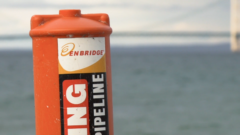
By Kelly House, Bridge Michigan
The Great Lakes News Collaborative includes Bridge Michigan; Circle of Blue; Great Lakes Now at Detroit Public Television; and Michigan Radio, Michigan’s NPR News Leader; who work together to bring audiences news and information about the impact of climate change, pollution, and aging infrastructure on the Great Lakes and drinking water.
Great Lakes Now
https://www.greatlakesnow.org/2021/10/enbridge-line-5-shutdown-canada-us-negotiate/
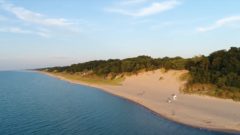
OGDEN DUNES, Ind. (AP) — A utility has restarted a northwest Indiana water treatment facility one week after idling it following a U.S. Steel plant’s discharge of iron-tainted wastewater into a Lake Michigan tributary.
Indiana American Water said it restarted its Ogden Dunes treatment facility Sunday after water sampling results confirmed the discharge did not impact its Lake Michigan water source.
Great Lakes Now
https://www.greatlakesnow.org/2021/10/ap-indiana-water-facility-us-steel-discharge/
The advisory council for NOAA’s proposed Lake Ontario National Marine Sanctuary will meet virtually from 6-8 p.m. on Wednesday, Oct. 20. NOAA will discuss elements of NOAA’s sanctuary proposal and address questions from council members and the public. Read the full story by Watertown Daily Times.
Great Lakes Commission
https://www.glc.org/dailynews/20211004-sanctuary
The All Nations Grand River Walk started out in 2018 with the commitment to walk the length of Ontario’s Grand River. Along the journey of the Grand River, the group performed ceremonies for the water which included prayer and singing to the water and offering intentions. Read the full story by CBC Canada.
Great Lakes Commission
https://www.glc.org/dailynews/20211004-walk
Montrealers will have access to a new beach in the east of the city as of 2022, Projet Montréal mayoral candidate Valérie Plante announced Sunday. Access to the water is a key plank for Projet Montréal, Plante said, noting that Montrealers now have the Verdun beach, which opened in June 2019, and the Place de l’Est in Pointe-aux-Trembles. Read the full story by the Montreal Gazette.
Great Lakes Commission
https://www.glc.org/dailynews/20211004-beach
Buffalo Harbor Kayak company provides a unique tour of where the historic Erie Canal, the Buffalo River and Lake Erie all become one. The tour not only showcases the water, but also provides a history lesson. Read the full story by Spectrum News 1.
Great Lakes Commission
https://www.glc.org/dailynews/20211004-kayak
Indiana American Water placed its Ogden Dunes treatment facility back in service Sunday, a week after taking it offline because of a discharge from the U.S. Steel Midwest facility. Read the full story by The Times of Northwest Indiana.
Great Lakes Commission
https://www.glc.org/dailynews/20211004-pollution
Duluth’s moderate climate, access to fresh water, and room to grow are some of the reasons why the city is considered an ideal place to relocate. Read and listen to the full story by Minnesota Public Radio.
Great Lakes Commission
https://www.glc.org/dailynews/20211004-duluth